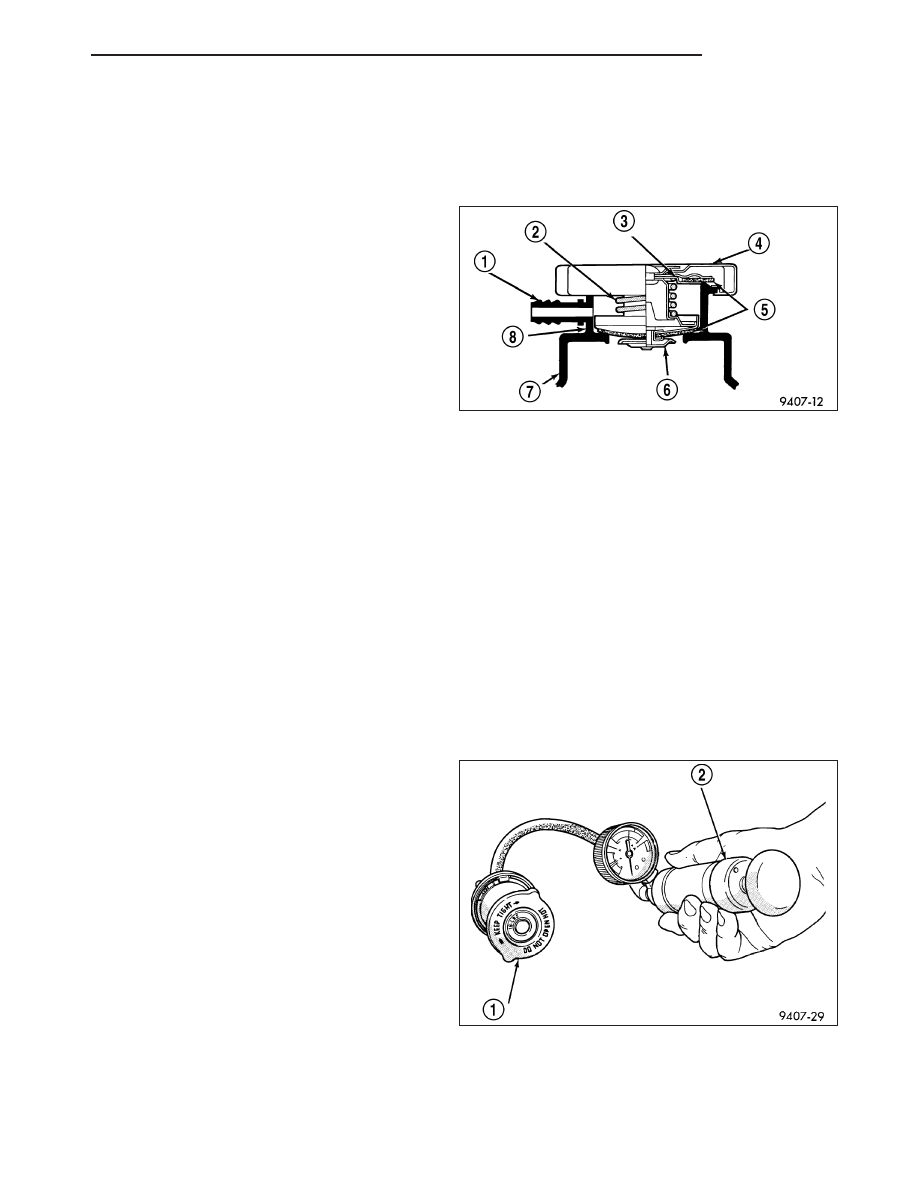Dodge Caliber. Manual - part 178

CAP RADIATOR PRESSURE
DESCRIPTION
GAS ENGINES
The cooling system is equipped with a pressure cap
that releases built up pressure, maintaining a range of
97-124 kPa (14-18 psi).
There is also a vent valve (6) in the center of the cap.
This valve also opens when coolant is cooling and
contracting, allowing coolant to return to radiator from
coolant recovery container by vacuum through con-
necting hose. If valve is stuck shut, the radiator
hoses will be collapsed on cool down. Clean the
vent valve to ensure proper sealing when boiling
point is reached.
OPERATION
GAS ENGINES
The pressure cap allows the cooling system to operate at higher than atmospheric pressure. The higher pressure
raises the coolant boiling point; this allows increased radiator cooling capacity.
The secondary gasket in the cap seals the filler neck and the primary gasket seals the cooling system so that
vacuum can be maintained, allowing coolant to be drawn back into the radiator from the reserve container.
A vent valve in the center of the cap will remain shut as long as the cooling system is pressurized. As the coolant
cools, it contracts and creates a vacuum in cooling system. This causes the vacuum valve to open and coolant in
reserve/overflow tank to be drawn through connecting hose into radiator. If the vacuum valve is stuck shut, or over-
flow hose is kinked, radiator hoses will collapse on cool-down.
DIAGNOSIS AND TESTING
DIAGNOSIS AND TESTING - COOLING SYSTEM PRESSURE CAP TESTING
Dip the pressure cap in water. Clean any deposits off
the vent valve or its seat and apply cap to end of the
Pressure Cap Test Adaptor that is included with the
Cooling System Tester 7700. Working the plunger,
bring the pressure to 104 kPa (15 psi) on the gauge. If
the pressure cap fails to hold pressure of at least 97
kPa (14 psi), replace the pressure cap.
CAUTION: The Cooling System Tester Tool is very
sensitive to small air leaks that will not cause
cooling system problems. A pressure cap that
does not have a history of coolant loss should not
be replaced just because it leaks slowly when
tested with this tool. Add water to the tool. Turn
tool upside down and recheck pressure cap to
confirm that cap is bad.
If the pressure cap tests properly while positioned on Cooling System Tester 7700, but will not hold pressure or
vacuum when positioned on the filler neck. Inspect the filler neck and cap top gasket for irregularities that may
prevent the cap from sealing properly.
PM
ENGINE
7 - 37